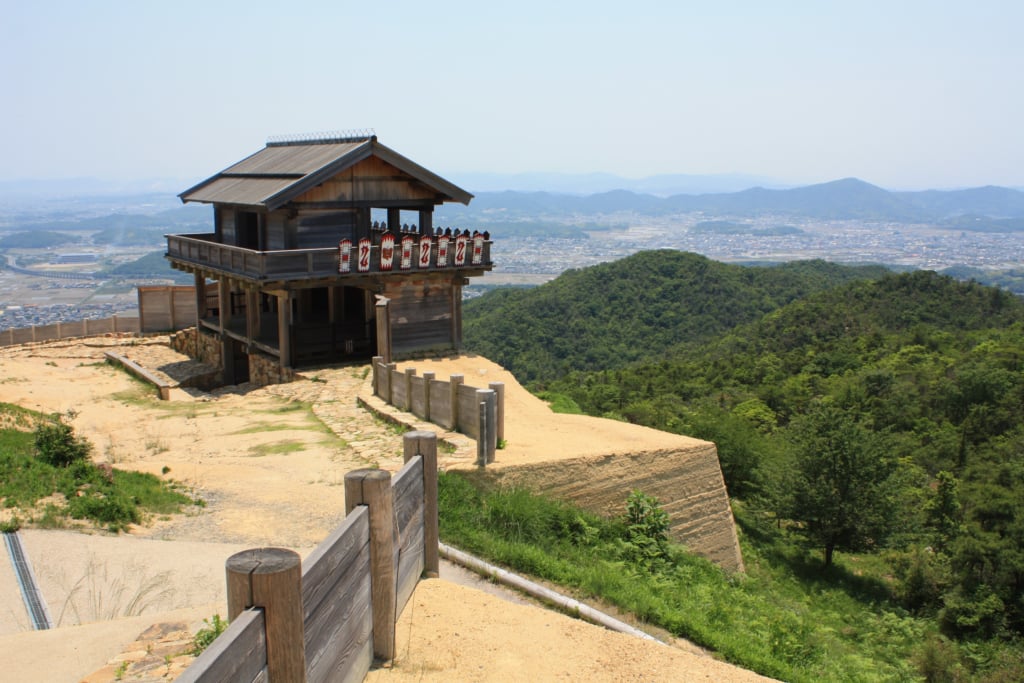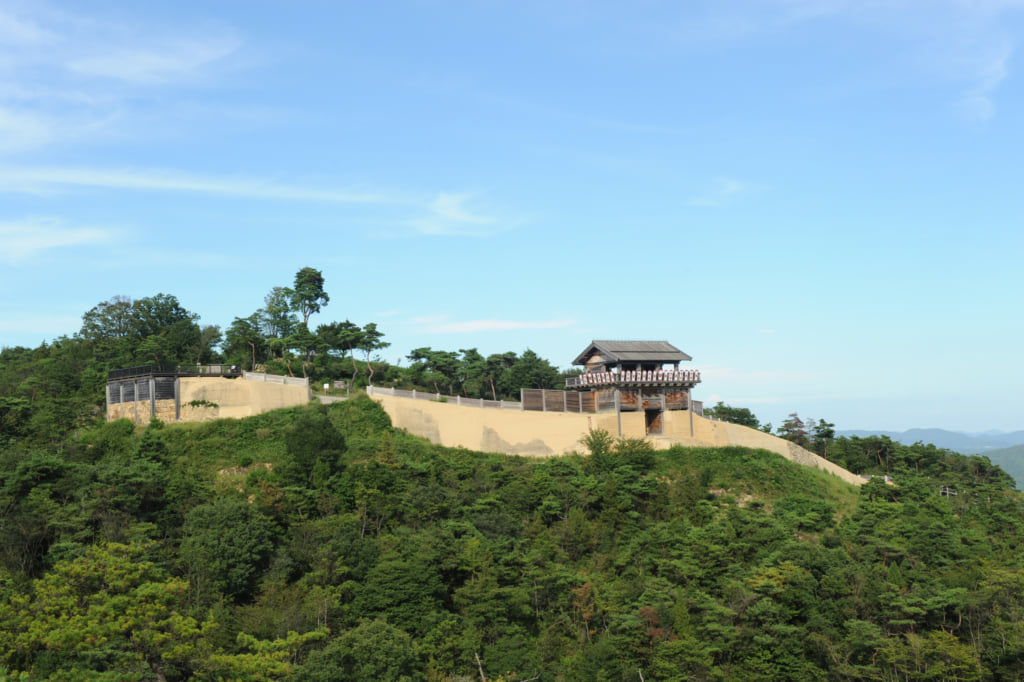Kinojo Castle, the Home of Popular Tales
Located in Okayama prefecture, the thousand-year-old fortress is now known for having served as the setting for ‘Momotaro’.

© Okayama Prefectural Tourism Federation
Perched on the summit of Mount Kijo, the ruined castle overlooks the city of Soja. Built in the 7th century by the Yamato Imperial Court as a defence against invaders, the site forged its reputation by becoming the setting for several Japanese legends.
Indeed, as its name indicates, Kinojo literally means ‘demon’s castle’.
The setting for one of the most popular tales in Japan
One story tells of how, in the Kingdom of Kibi, now Okayama, a monster from another country set up home in a fortress located up high that he built himself, named Kinojo. Known by the name of ‘Prince Ura of Kudara’, he spread terror among the residents. To restore peace, a mythological hero decided to kill the demon on the mountain.
This story is at the origin of the equally famous tale of Momotaro, the child born in a peach, a fruit grown in abundance in the region of Okayama. After having been picked by an elderly couple, the child decides to leave the family home to hunt ogres on the island of Onigashima. Accompanied by a talking dog, monkey and pheasant, he fights the head of the giants, Ura, and returns to his village triumphant. Thanks to his courage and generosity, he has become a strong symbol in Japanese folklore. In certain versions, Momotaro takes on the qualities of Prince Isaserihiko, who vanquished the demon Ura.
A national treasure in ruins
Classed as a national heritage site and named as one of the 100 most beautiful castles in the country, the cultural property Kinojo has been undergoing reconstruction work since the early 2000s. The western entrance and the corner building, restored in 1996, are the two parts that can be viewed close up. To discover more about them, there is a visitor centre that is free to access. A diorama allows visitors to imagine the importance of the building and its forges, watchtowers and other defensive systems at the time.
In the kogoishi style (a structure made from earth on a stone foundation), the castle includes authentic aspects of a medieval fortress, with four entrances standing 6 metres high and six lock gates. Archaeological artefacts, pottery, weapons and tools made from iron have also been discovered on the site. Now, all that remains are ruins spread over an area of 30 hectares. Paths have been created so visitors can admire the remains, but also the unobstructed panoramic view over Soja.
More information can be found on the Okinawa Tourist Office website.

© Okayama Prefectural Tourism Federation

© Okayama Prefectural Tourism Federation
TRENDING
-
A House from the Taisho Era Reveals Its Secrets
While visiting an abandoned building, Hamish Campbell discovered photographs the owner had taken of the place in the 1920s.

-
The Taboo-Breaking Erotica of Toshio Saeki
The master of the 1970s Japanese avant-garde reimagined his most iconic artworks for a limited box set with silkscreen artist Fumie Taniyama.

-
With Meisa Fujishiro, Tokyo's Nudes Stand Tall
In the series 'Sketches of Tokyo', the photographer revisits the genre by bringing it face to face with the capital's architecture.

-
Masahisa Fukase's Family Portraits
In his series ‘Family’, the photographer compiles surprising photos in which he questions death, the inescapable.

-
Hajime Sorayama's Futuristic Eroticism
The illustrator is the pioneer for a form of hyperrealism that combines sensuality and technology and depicts sexualised robots.





